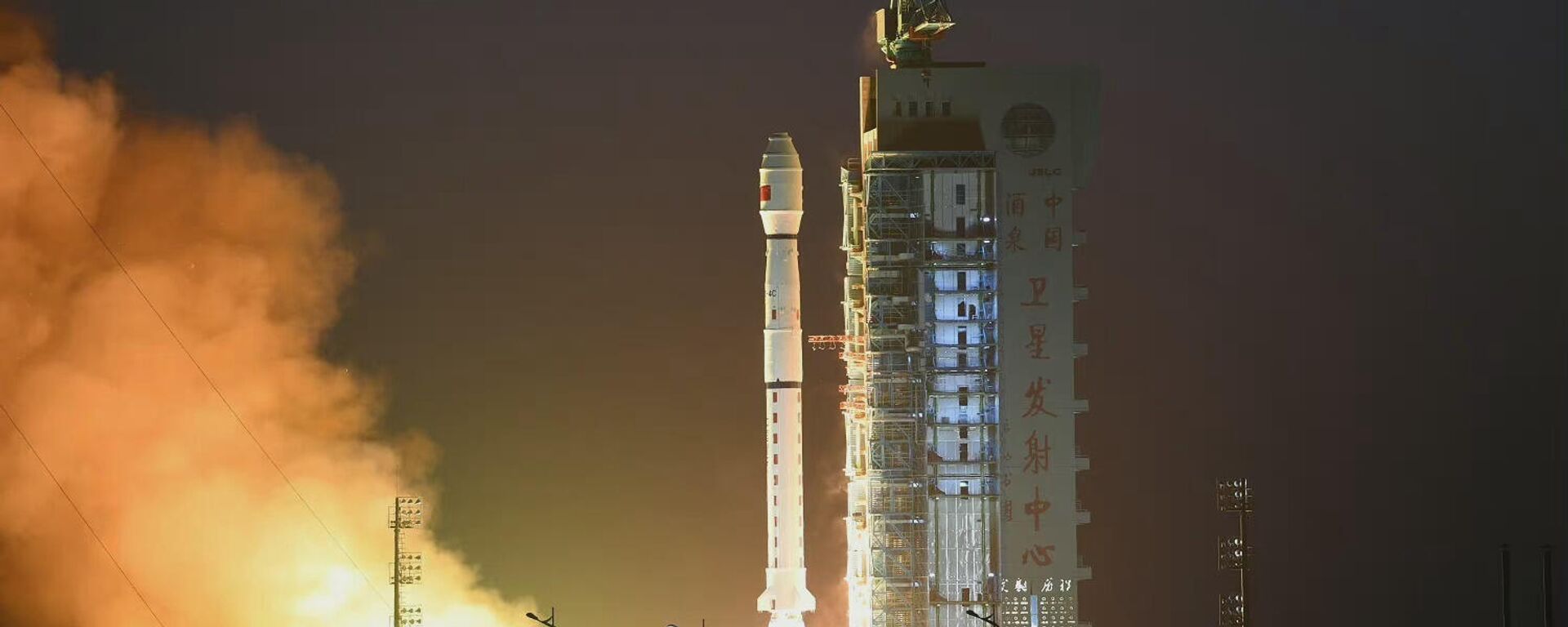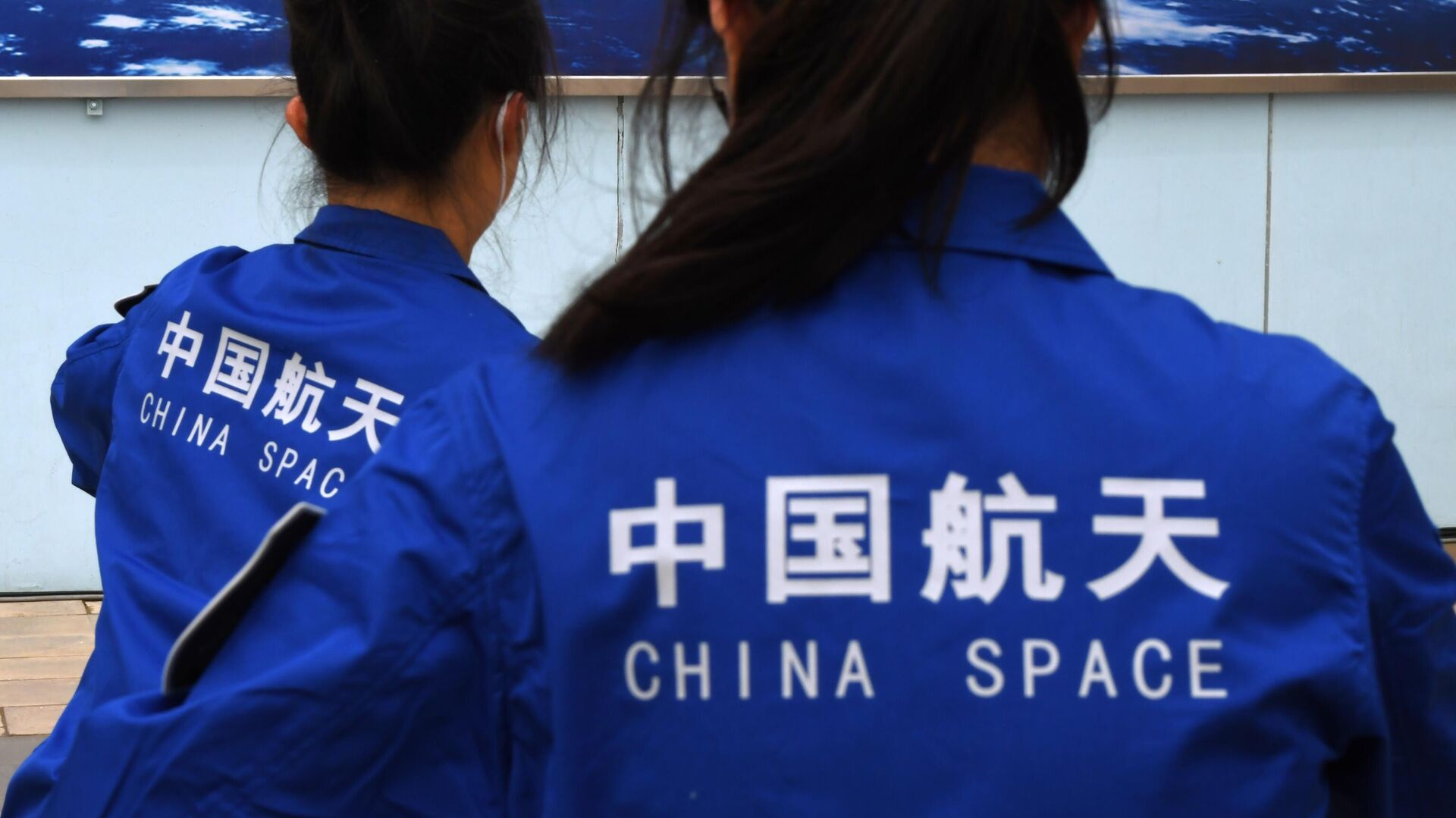https://sputnikglobe.com/20240716/chinas-first-all-electric-propulsion-communication-satellite-becomes-fully-operational-1119391042.html
China's First All-Electric Propulsion Communication Satellite Becomes Fully Operational
China's First All-Electric Propulsion Communication Satellite Becomes Fully Operational
Sputnik International
China's APStar-6E satellite is now fully operational after passing in-orbit and ground station technology tests.
2024-07-16T12:47+0000
2024-07-16T12:47+0000
2024-07-16T12:48+0000
beyond politics
science & tech
china
hong kong
xichang satellite launch center
satellite
space exploration
https://cdn1.img.sputnikglobe.com/img/07e8/01/11/1116235493_0:161:3069:1887_1920x0_80_0_0_d7d795e015d000ff273400b124452cde.jpg
The Asia-Pacifc-6E, or the APStar-6E, China's first all-electric propulsion communication satellite, has successfully passed in-orbit technology verification and ground station technology reviews in Hong Kong, which means the satellite has become fully operational after having successfully passed all in-orbit tests, according to spacecraft manufacturer China Great Wall Industry Corporation (CGWIC) on Monday.As of Monday, all tests outlined in the in-orbit testing protocol were completed successfully. The payload of the APStar-6E is functioning normally, with performance consistent with ground test results, meeting contractual specifications and in-orbit operational requirements, the CGWIC told the Global Times on Monday in a statement.Both sets of Hall/Ion electric propulsion systems on the platform met the station-keeping requirements, read the statement.By providing highly cost-effective, high-throughput broadband satellite resources, the APStar-6E will aid the development of the regional information industry and address the digital divide faced by developing areas, according to the CGWIC.Developed by the China Academy of Spacecraft Technology using the DFH-3E satellite platform, the APStar-6E is the first satellite of its kind.The APStar-6E is operated by Hong Kong-based APT Mobile Satcom Limited and managed by APT Satellite Company Limited. The APStar-6E focuses on the Southeast Asian market, providing high-capacity, cost-effective broadband communication services to the region.The APStar-6E communication satellite and its independent propulsion module were successfully launched by a Long March-2C carrier rocket at the Xichang Satellite Launch Center in Southwest China's Sichuan Province on January 13, 2023.After separating from the propulsion module on January 23 of the same year, the satellite used its onboard Hall/Ion dual electric propulsion systems to autonomously change orbits, reaching geosynchronous orbit (GEO) and positioning at its test location on June 10, 2024.The APStar-6E satellite is the new generation of all-electric propulsion commercial satellites in the DFH series, and is also the first Chinese satellite to achieve autonomous orbit transfer.After reaching the GEO, the in-orbit testing of the APStar-6E proceeded smoothly. Following the completion of the first phase of in-orbit testing on July 9, 2024, the satellite was repositioned to its operational slot at 134°E, co-located with the APStar-6C and APStar-6D.It is equipped with 25 Ku-band user beams and 3 Ka-band gateway beams, with a communication capacity of approximately 30 Gbps and an in-orbit lifespan of 15 years.The successful operation of the APStar-6E is significant for achieving high-capacity and low-cost satellite platforms, enhancing the international competitiveness of China's communication satellite platforms, realizing fully autonomous orbit raising and long-term autonomous operations, and improving the intelligent autonomy of China's satellite platforms, according to the CGWIC.CGWIC, a subsidiary of the state-owned space giant China Aerospace Science and Technology Corporation (CASC), has conducted 13 in-orbit delivery communications satellite programs for international customers so far, and has delivered its communications satellite system to multiple countries and regions including Nigeria, Venezuela, Pakistan, Bolivia, Laos, Belarus and Algeria, the Global Times has learned.This article was originally punblished on the Global Times website.
https://sputnikglobe.com/20240520/china-launches-rocket-carrier-to-put-4-satellites-into-space-1118540051.html
https://sputnikglobe.com/20240123/china-has-no-iintention-of-participating-in-space-race-imagined-by-us-1116332247.html
china
hong kong
Sputnik International
feedback@sputniknews.com
+74956456601
MIA „Rossiya Segodnya“
2024
Sputnik International
feedback@sputniknews.com
+74956456601
MIA „Rossiya Segodnya“
News
en_EN
Sputnik International
feedback@sputniknews.com
+74956456601
MIA „Rossiya Segodnya“
Sputnik International
feedback@sputniknews.com
+74956456601
MIA „Rossiya Segodnya“
china, all-electric satellite, space exploration, china great wall industry corporation, chinese space program, apstar-6e
china, all-electric satellite, space exploration, china great wall industry corporation, chinese space program, apstar-6e
China's First All-Electric Propulsion Communication Satellite Becomes Fully Operational
12:47 GMT 16.07.2024 (Updated: 12:48 GMT 16.07.2024) China's APStar-6E satellite is now fully operational after passing in-orbit and ground station technology tests.
The Asia-Pacifc-6E, or the APStar-6E, China's first all-electric propulsion communication satellite, has successfully passed in-orbit technology verification and ground station technology reviews in Hong Kong, which means the satellite has become fully operational after having successfully passed all in-orbit tests, according to spacecraft manufacturer China Great Wall Industry Corporation (CGWIC) on Monday.
As of Monday, all tests outlined in the in-orbit testing protocol were completed successfully. The payload of the APStar-6E is functioning normally, with performance consistent with ground test results, meeting contractual specifications and in-orbit operational requirements, the CGWIC told the Global Times on Monday in a statement.
Both sets of Hall/Ion electric propulsion systems on the platform met the station-keeping requirements, read the statement.
By providing highly cost-effective, high-throughput broadband satellite resources, the APStar-6E will aid the development of the regional information industry and address the digital divide faced by developing areas, according to the CGWIC.
Developed by the China Academy of Spacecraft Technology using the DFH-3E satellite platform, the APStar-6E is the first satellite of its kind.
The APStar-6E is operated by Hong Kong-based APT Mobile Satcom Limited and managed by APT Satellite Company Limited. The APStar-6E focuses on the Southeast Asian market, providing high-capacity, cost-effective broadband communication services to the region.
The APStar-6E communication satellite and its independent propulsion module were successfully launched by a Long March-2C carrier rocket at the Xichang Satellite Launch Center in Southwest China's Sichuan Province on January 13, 2023.
After separating from the propulsion module on January 23 of the same year, the satellite used its onboard Hall/Ion dual electric propulsion systems to autonomously change orbits, reaching geosynchronous orbit (GEO) and positioning at its test location on June 10, 2024.
The APStar-6E satellite is the new generation of all-electric propulsion commercial satellites in the DFH series, and is also the first Chinese satellite to achieve autonomous orbit transfer.

23 January 2024, 12:14 GMT
After reaching the GEO, the in-orbit testing of the APStar-6E proceeded smoothly. Following the completion of the first phase of in-orbit testing on July 9, 2024, the satellite was repositioned to its operational slot at 134°E, co-located with the APStar-6C and APStar-6D.
It is equipped with 25 Ku-band user beams and 3 Ka-band gateway beams, with a communication capacity of approximately 30 Gbps and an in-orbit lifespan of 15 years.
The successful operation of the APStar-6E is significant for achieving high-capacity and low-cost satellite platforms, enhancing the international competitiveness of China's communication satellite platforms, realizing fully autonomous orbit raising and long-term autonomous operations, and improving the intelligent autonomy of China's satellite platforms, according to the CGWIC.
CGWIC, a subsidiary of the state-owned space giant China Aerospace Science and Technology Corporation (CASC), has conducted 13 in-orbit delivery communications satellite programs for international customers so far, and has delivered its communications satellite system to multiple countries and regions including Nigeria, Venezuela, Pakistan, Bolivia, Laos, Belarus and Algeria, the Global Times has learned.
This article was originally punblished on the Global Times website. 



